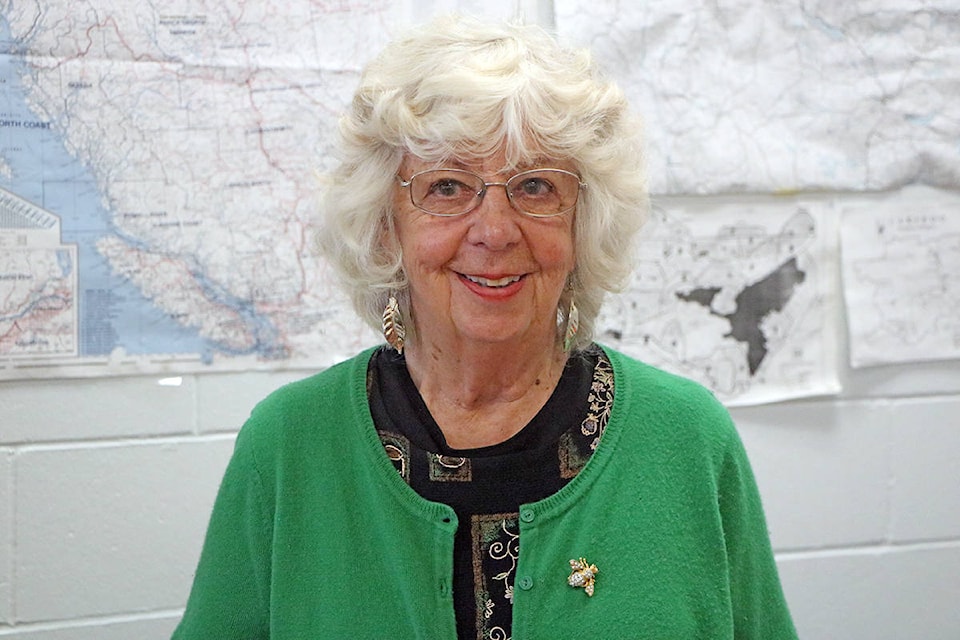In May 1986, Richard Bergen began a new, unique occupation - a shepherd - working for the Ministry of Forests in the high country north of 100 Mile House. Flocks of sheep were to graze in newly-planted cut blocks to see if the work they did controlling weeds would benefit the young trees. The sheep would be grazed in consecutive blocks that ranged in size from 15 to 28 hectares.
Bergen was one of four workers/shepherds who slashed trails around the block perimeters for low-volt electric fencing. There were also two high school students and two foremen at the camp.
“The fence would deter deer, moose and predators such as bears,” he explained. “The electricity was provided by solar panels. We also built corrals as the sheep were brought in close to the camp at night. We also fenced in three smaller areas for Forestry that would not be grazed and would be used for comparing the results.
“Fourteen-hundred sheep were brought by trucks from Princeton, Horsefly, Likely, Williams Lake, Anaheim and 100 Mile House. They were all ewes and lambs so there would be no crossbreeding. As they were unloaded we counted the sheep from each farm. They were dabbed with a certain colour on the back end so that if one died, whether by natural causes or predator, we would know which flock it belonged to. The sheep were supposed to be docked, free of ticks and they were to have foot baths once a month.”
Bergen and his crew were out among the flock from 6 am to 6 pm. As they walked, they watched for any problems with the flock’s feet, such as nails that needed clipping. During the day they grazed for two hours, then rested for two. There was ample water for them with springs everywhere.
“We had the help of an amazing sheepdog named Trixie,” Bergen said. “She was the North American champion sheepdog for three years. She was always on duty. When we moved the sheep on the road to the next block, she put them wherever we wanted.
READ MORE: Maiden Creek Hill ‘perfect view’ of Cariboo Wagon Road
“We moved from block to block. By mid-August, we were on the road up to the mine. The road was rough and rutted, and the terrain became really difficult. It started to snow and there was ice in the water buckets. We kept going past the townsite to pens and a barn we built to the right of Hendrix Road near Bosk Lake. By the second week in October, all of the flocks were together. We counted them carefully as each flock was loaded to return home. Losses were very low with only about three percent from predators.”
Bergen worked in the grazing program until 1989. It ended around 1991.
“Forestry people are still studying the results, comparing the ungrazed sections with the grazed ones. I think the benefits are obvious. With more sunlight, the young trees in the grazed blocks are much bigger than the ones in the ungrazed sections,” he said. “The sheep ate poplars and willow shoots, dandelions and fireweed. They would move over a thistle and strip it bare so that only the stem remained. And because we were right there with them, they weren’t nervous so they moved slowly and didn’t trample on the small trees, just stepped over them. Forestry gave us a 97 percent rating for the condition of our blocks.”
The drive to Hendrix Lake is a lovely one, especially when fall begins to fill the air and the roads with gold from the trees. The Hendrix Lake townsite is 82.1 kilometres from 100 Mile House. Canim-Hendrix Lake Road is paved to Eagle Creek and becomes Hendrix Road shortly after the pavement ends.
The first grazing block where Richard Bergen worked is on the left, about five kilometres before the townsite, directly opposite the right-hand turn onto 6300 Road. Look closely and you may be able to see rails from the corrals and posts from fences that were part of the project.
newsroom@100milefreepress.net
Like us on Facebook and follow us on Twitter.
